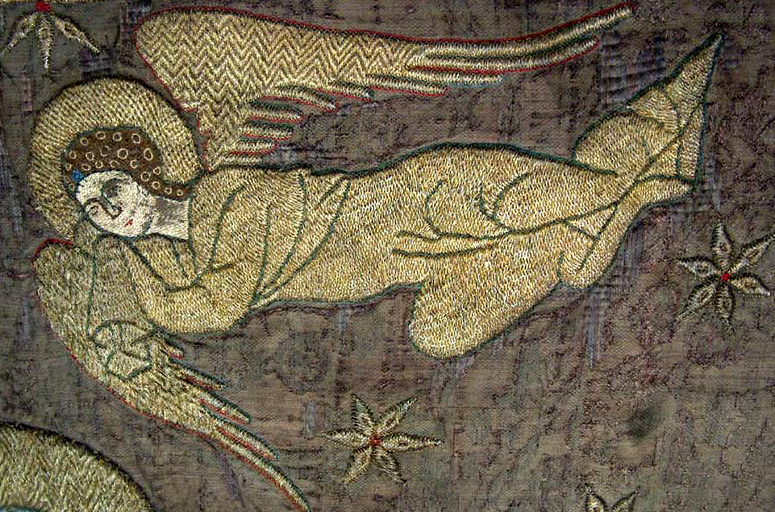User Group Leader: Zizi-Ileana Balta
http://www.mnir.ro/
Venue: MTA Atomki, Debrecen, Hungary
Historical textiles adorned with precious metal threads are among the most valuable testimonials of the European cultural heritage and have a large geographical spreading in the world, marking actually the entire historical evolution of the humankind.
Our study aimed to bring new supplementary, more in-depth information on the technological and morphological characteristics of the very thin and small, possibly multi layered metal threads used for manufacturing the luxurious medieval golden threads textiles, information that would complement the existing one resulted in the previous projects Charisma IBATEX 1 and IBATEX 2. The main objective was to reveal new insights into their microchemical nature (composition and structure) by using the advanced PIXE microbeam bulk analysis and elemental mapping for authentication, attribution and provenience purposes. The aesthetic, stylistic and chemical evolution of the metal threads in time provides reference scales that could be used to interpret technological and artistic changes throughout the period between the 14th and 16th century, and to recognize the physico-chemical characteristics that either are or are not inconsistent with the supposed age of the textile artifact, highlighting the potential anachronisms towards the composition, structure or the metalworking technological methods used in the middle ages in accordance with the medieval written sources or the results previously reported.
Samples were selected from four different categories of medieval textiles with known provenience (Moldavia, Wallachia, Italy, Ottoman Empire) and consistent dating as appeared in the art historical literature: 1. religious embroideries worked in the traditional Byzantine technique; 2. velvet brocade fabrics with an embroidered inscription of donation; 3. velvet brocade fabrics, typological and stylistically similar, but with no inscription of donation; and 4. velvet brocade clothes. The first three categories of textiles (epitrachelion, nabedernita, altar door curtain, epitaph, epimanikia, etc.) were used for liturgical purposes during the religious service, while the gold clothes were worn as court garments and vestments of Italian and Oriental influence by the Moldavian and Wallachian princes, princesses and boyars (ceremony costumes, caftans, granatza, etc.).
Three types of metal threads have been studied: metal wires with no core yarn; metal wires twisted on a dyed (red, blue, green etc.) silk yarn; flattened strips wound around a dyed (yellow, brownish-purple etc.) or undyed (white) silk yarn.
PIXE measurements were performed in vacuum, on 50 samples, at the ATOMKI scanning nuclear microprobe with a proton beam of 2.5 MeV energy and a current of 300-500 pA. PIXE elemental maps were recorded in two different modes: full scan of the sample and two selected homogeneous areas of 500 µm2, 750 µm2 or 1 mm scan size depending of the sample, in order to reveal the main (Ag) and some minor constituents (Au, Cu) elemental distribution and for technological features identification.
PIXE data indicated that were used at least 2 types of materials for producing the metal threads:
– high purity gilded silver (Ag conc. > 98% wt.) with traces of Au, Cu, and traces of Hg and Bi
– gilded silver (Ag conc. > 84.5 – 92% wt.) with gold between 5-8% wt. and traces of Cu
– Ag-Cu gilded alloy with Cu and Au around 3% wt.
– Ag-Cu gilded alloy with Cu around 3% wt. and Au between 6-9% wt.
– Ag-Cu gilded alloy with Cu between 6 – 9% wt. and Au around 3% wt.
For all studied samples, the resulting lead content was ranging from 0.1 to 0.3% wt. which is characteristic for the medieval cupelled silver. The different compositions revealed a different origin of the metal threads in the velvet brocades from Moldavia compared to those from Wallachia, and as well for the metal threads used in the religious embroideries, and that correspond to their attested provenance. In the middle ages, there were two different trading routes connecting the two Romanian countries – Moldavia and Wallachia, with the Western and the Oriental or Byzantine worlds which seem to be in accordance with the resulted data.
MicroPIXE proved to be a powerful non-destructive and very useful analytical technique in the study of micrometric metallic threads, allowing simultaneously determination of the composition and distribution of the major, minor and trace elements by the use of micron-sized proton beams.
Information acquired would be used not only by our colleagues restorers and conservators as an important data that can be very useful when deciding and developing new appropriate restoration, preservation and conservation treatments, but also by art historians and curators for a correct interpretation of the function, significance, history and the degree of deterioration and degradation of the historical and artistic metal threads textiles, and by the conservation scientists as well for studies of dating, provenience and authentication.

